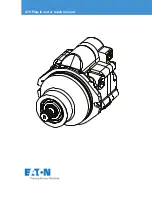
14 HP 420cc OHV Gas Engine with Electric Start
V1.1
16
For technical questions call 1-800-665-8685
below 5,000 ft (1,524 m) may cause the engine to overheat and result in serious
engine damage. When using this engine at low altitudes, have a qualified
technician return the carburetor to original factory specifications.
CLEANING THE SEDIMENT CUP
CAUTION! Wear latex or rubber gloves when working on the sediment cup. The
cup may contain fuel that will cause skin irritation. Prolonged and repeated
exposure to fuel on skin may result in dry, cracked skin.
1.
Switch the fuel valve to the OFF position.
2.
Remove the fuel sediment cup, screw and o-ring.
3.
Clean the sediment cup with a non-flammable solvent or detergent and
rinse. Allow to dry.
a.
Some chemicals will damage the o-ring material. Check for
compatibility or replace the o-ring.
4.
Reassemble the sediment cup and o-ring.
5.
Switch the fuel valve to the ON position and check for leaks. Replace the
o-ring if the installation is correct, but fuel still leaks from the cup.
EMISSION CONTROL SYSTEM INFORMATION
The combustion process produces carbon monoxide, hydrocarbons and
nitrogen oxides. Controlling these emissions is important for personal and
environmental health.
The following instructions must be followed in order to keep the emissions
from your engine within Canadian emission standards.
1.
Do not remove or alter any part of the intake, fuel or exhaust system.
2.
Do not alter or bypass the governor linkage or a speed-adjusting
mechanism that force the engine to operate outside its design
specifications.
PROBLEMS THAT MAY AFFECT EMISSIONS
Have your engine inspected and repaired by a qualified technician if you are
aware of any of the following symptoms.
1.
Hard starting or stalling after starting.
2.
Rough idle.
3.
Misfiring or backfiring under load.
4.
Afterburning (backfiring).
5.
Black exhaust smoke or high fuel consumption.
















































